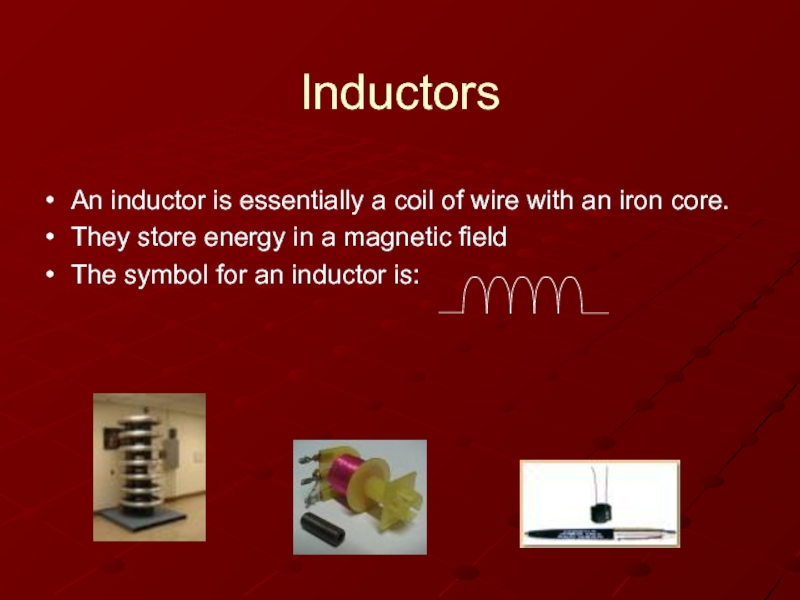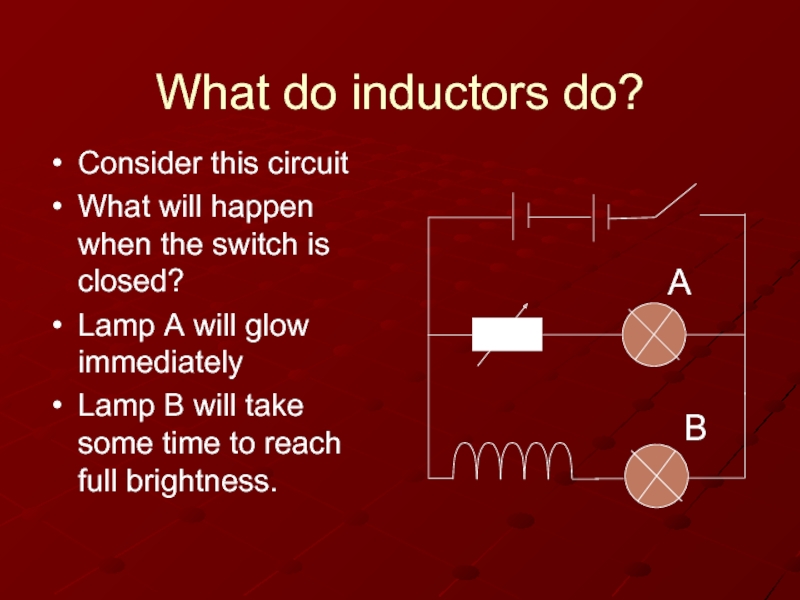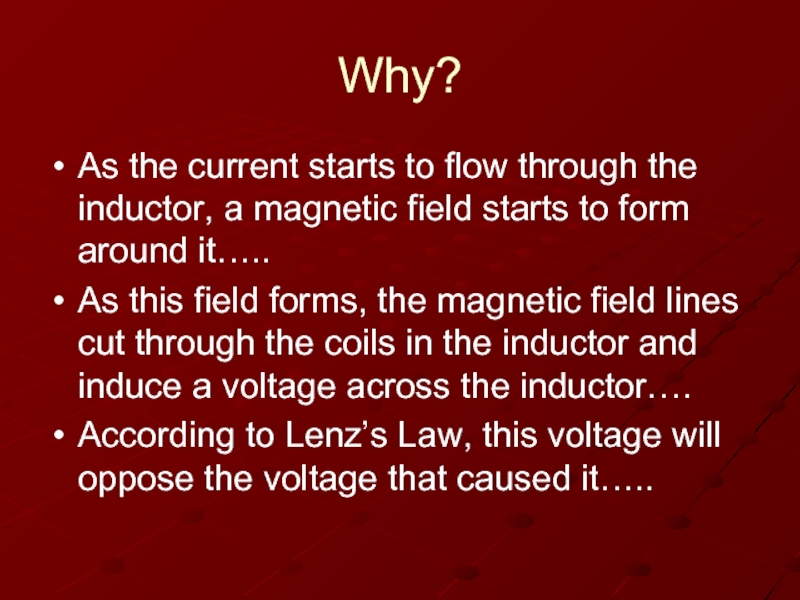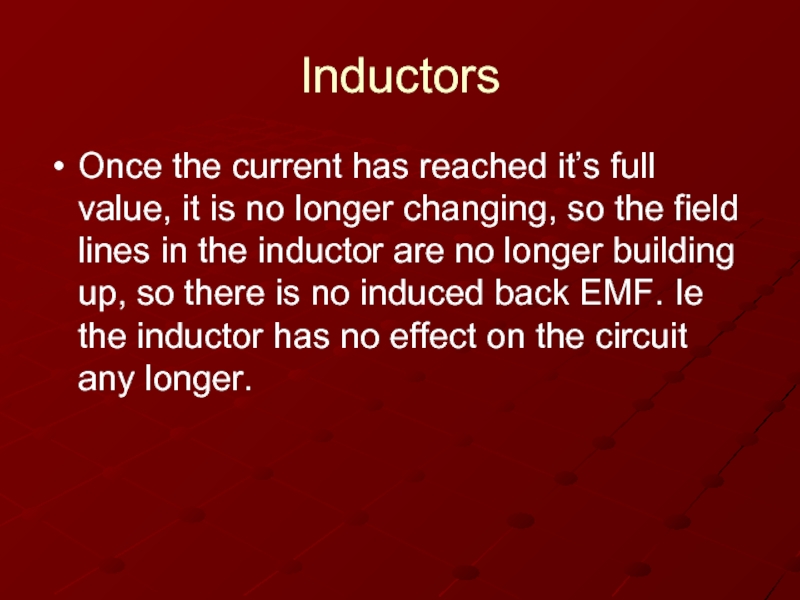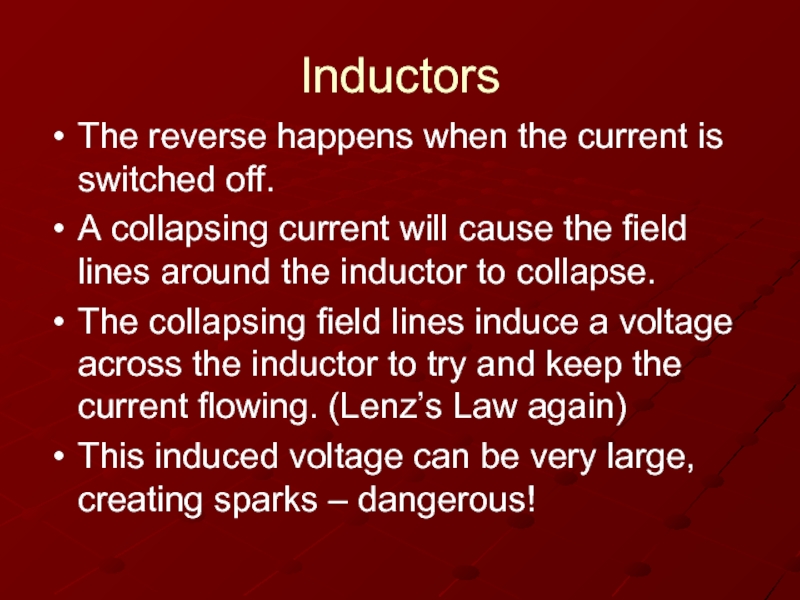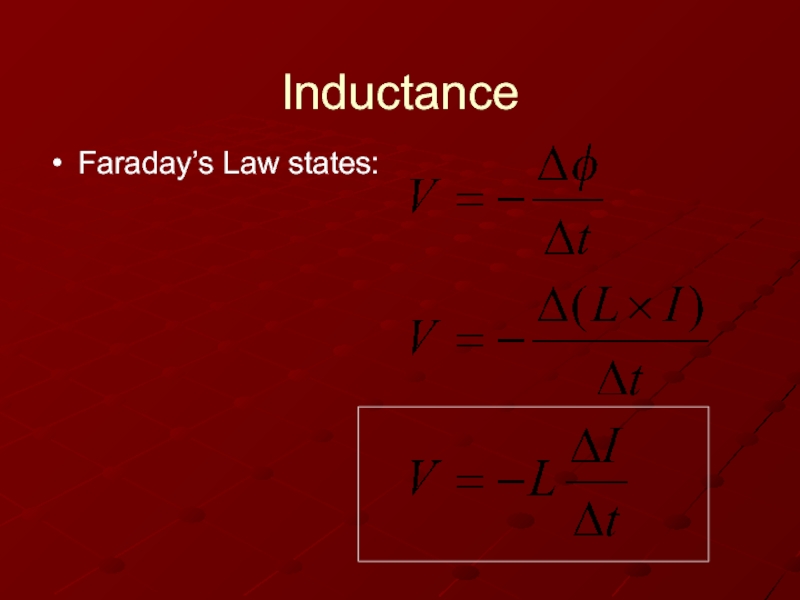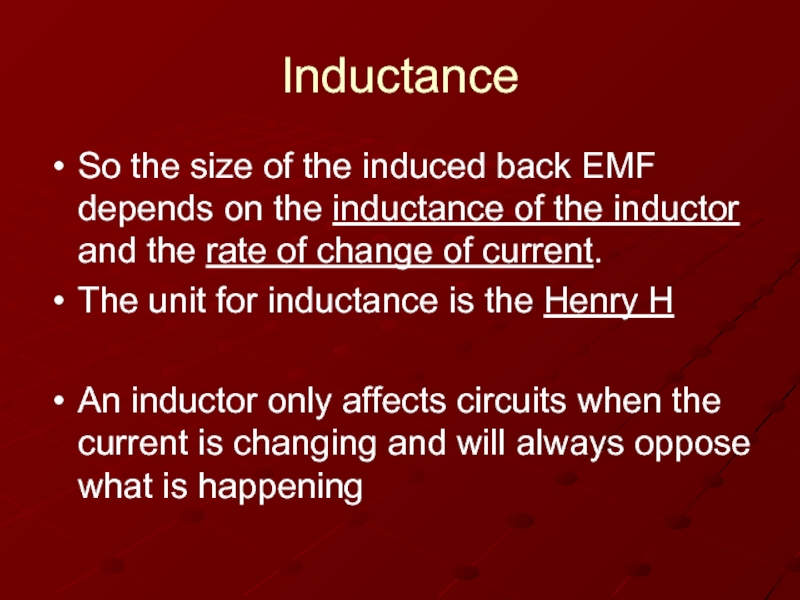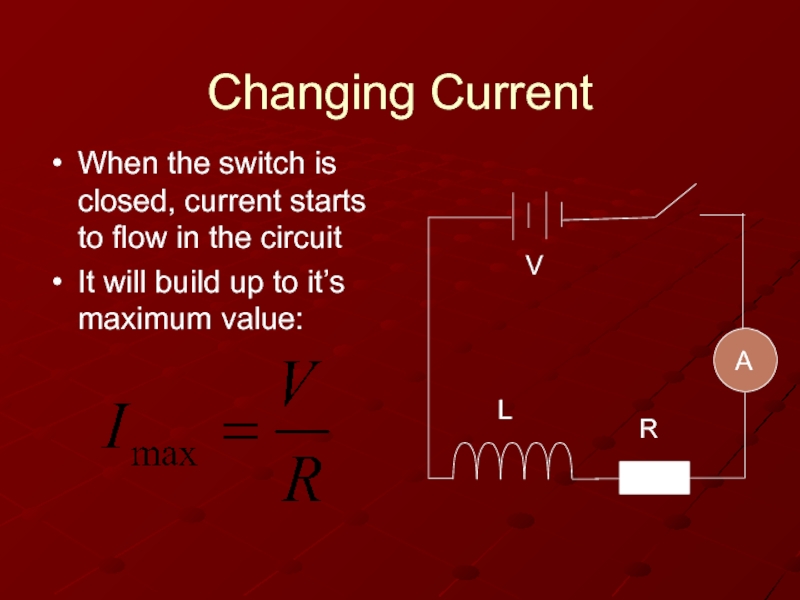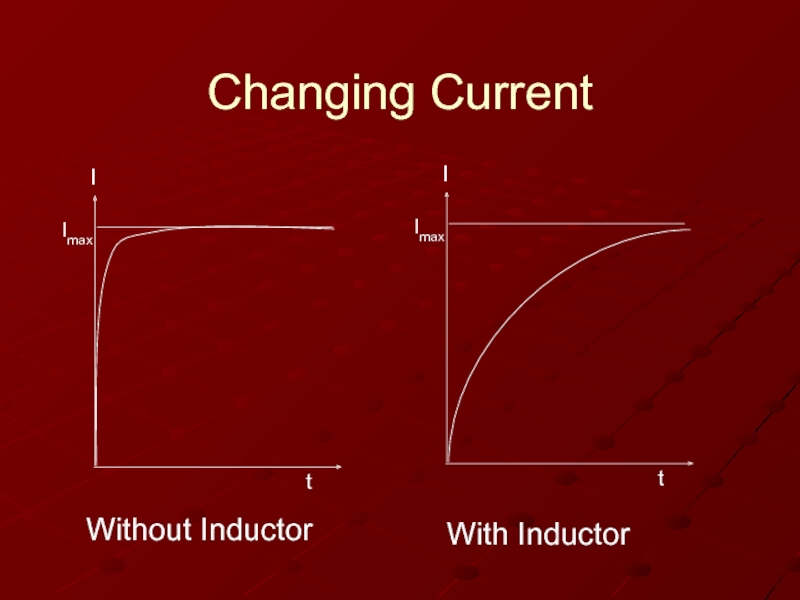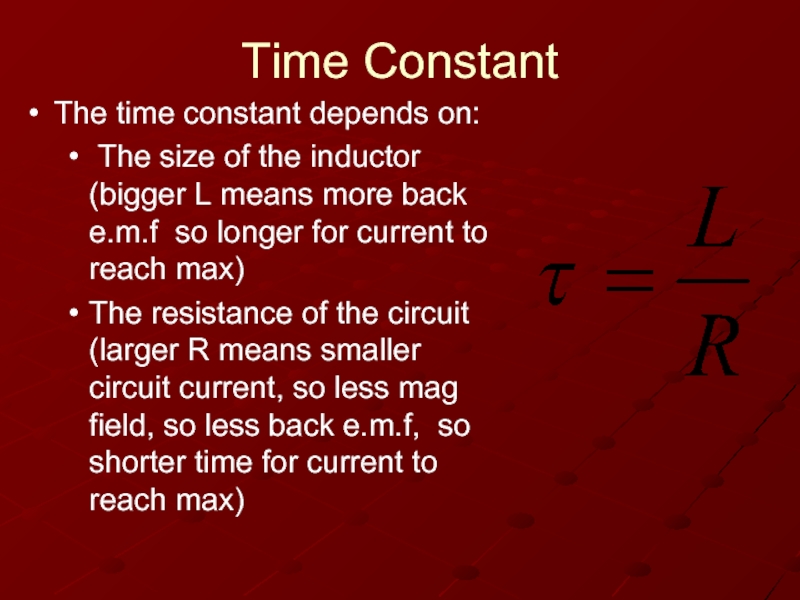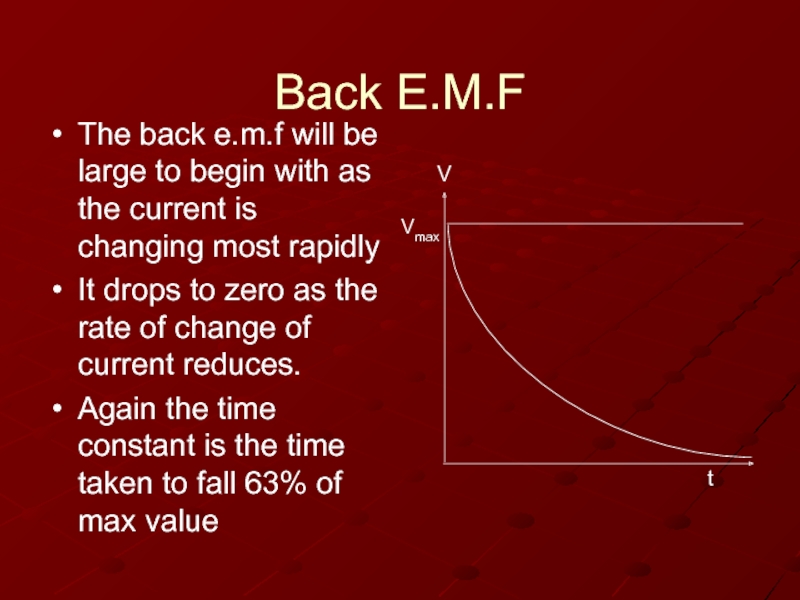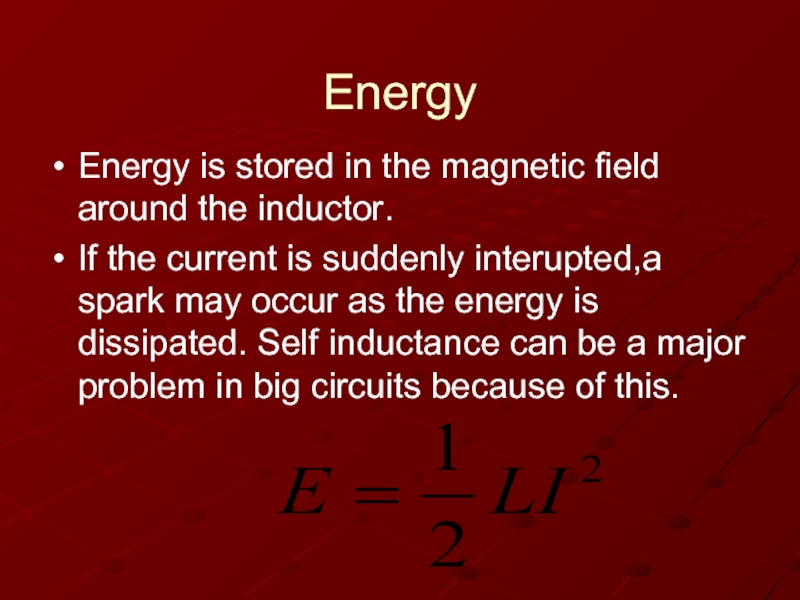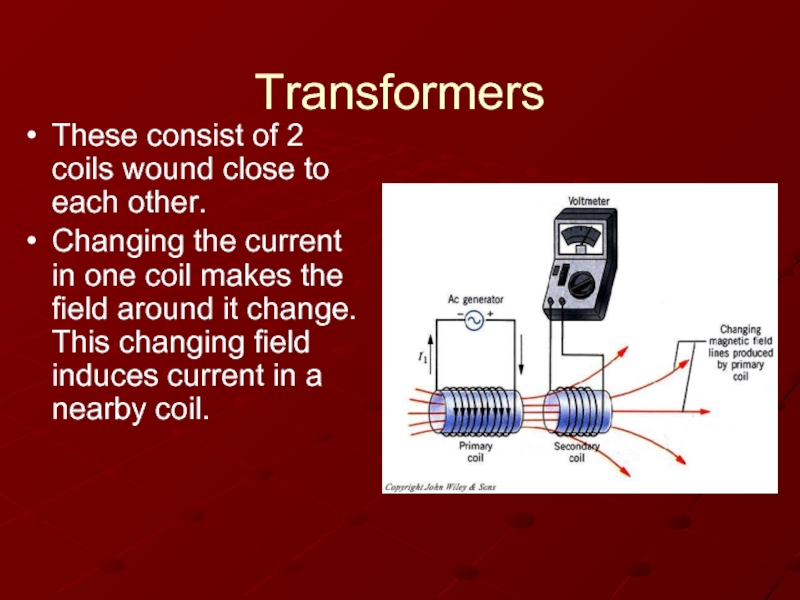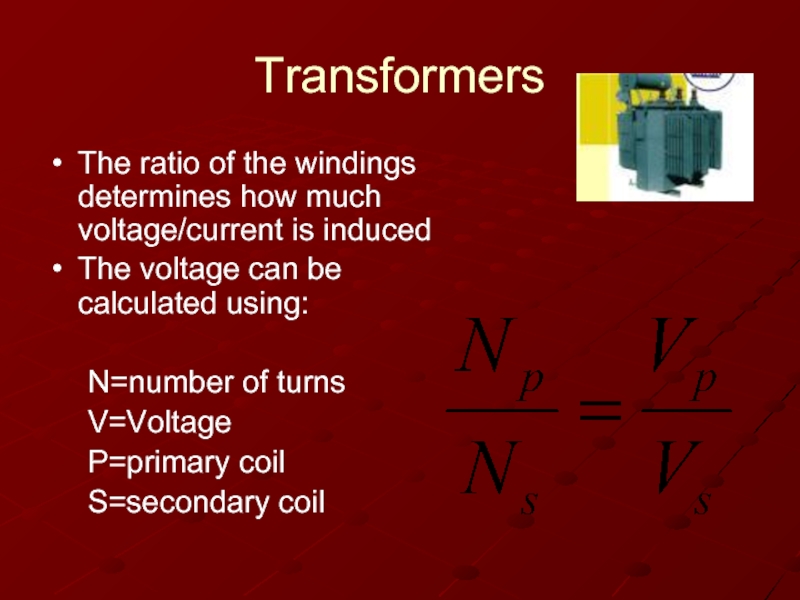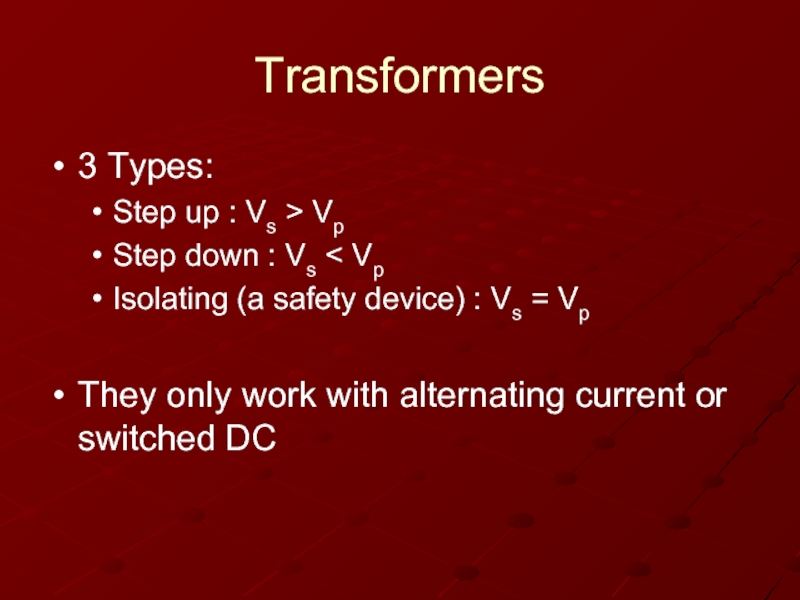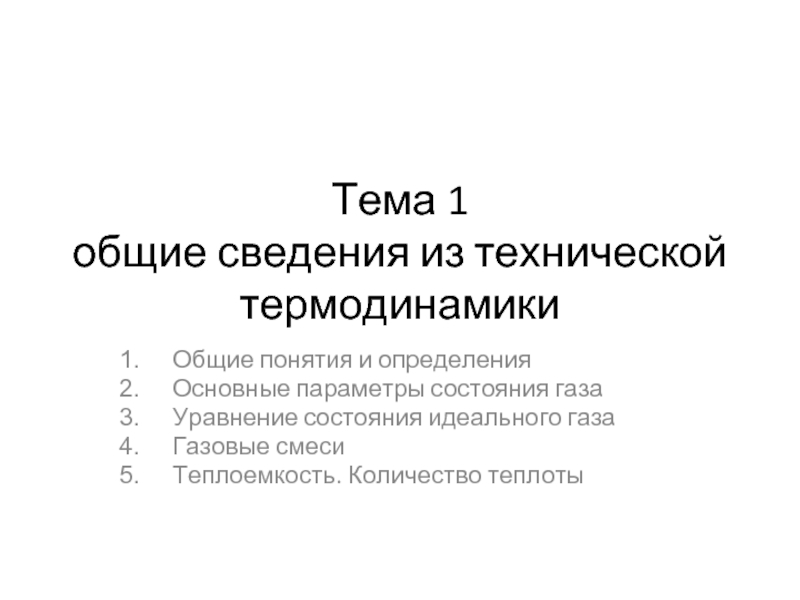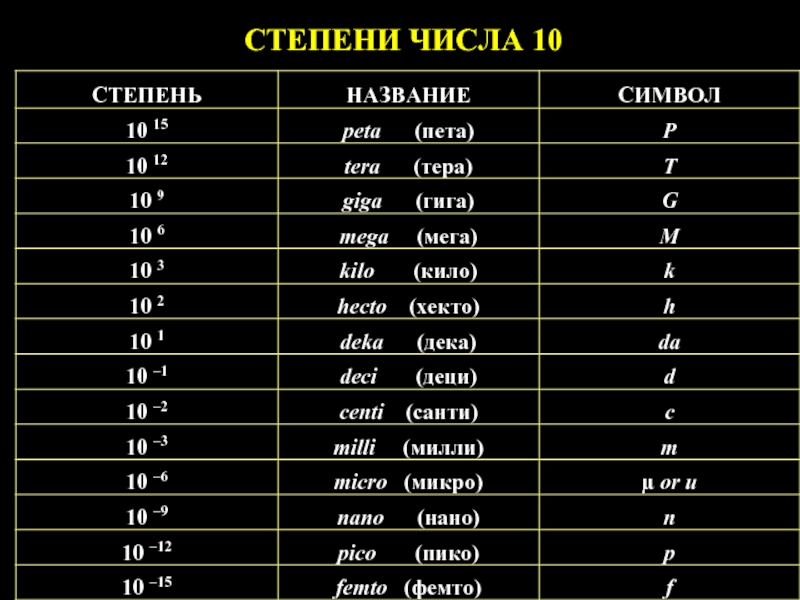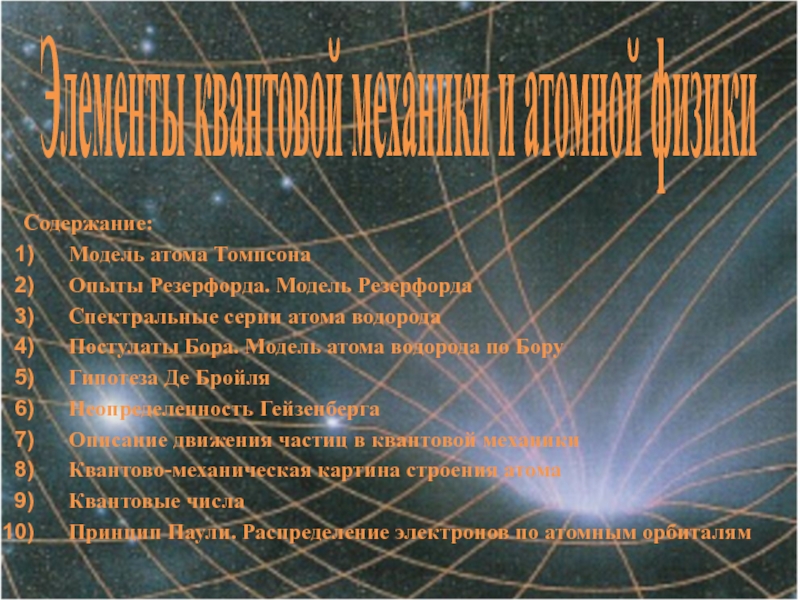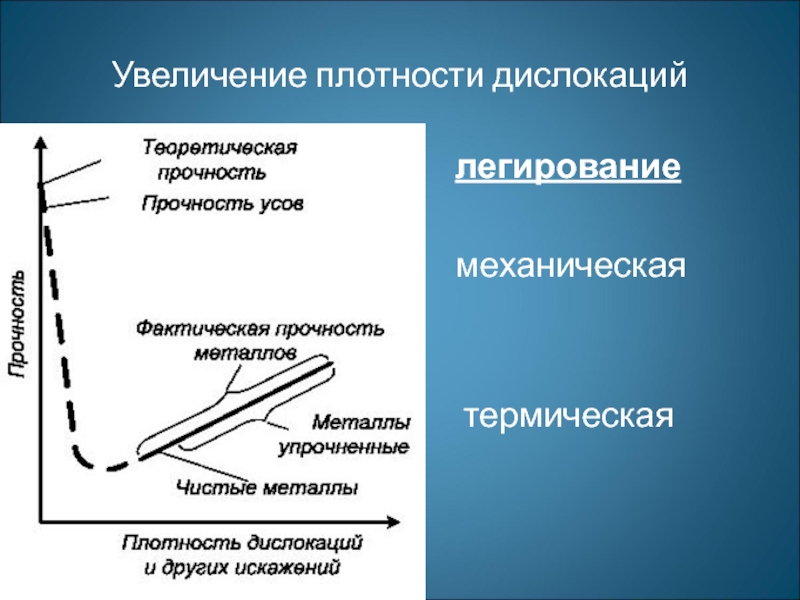core.
They store energy in a magnetic field
The symbol for an inductor is:
- Главная
- Разное
- Дизайн
- Бизнес и предпринимательство
- Аналитика
- Образование
- Развлечения
- Красота и здоровье
- Финансы
- Государство
- Путешествия
- Спорт
- Недвижимость
- Армия
- Графика
- Культурология
- Еда и кулинария
- Лингвистика
- Английский язык
- Астрономия
- Алгебра
- Биология
- География
- Детские презентации
- Информатика
- История
- Литература
- Маркетинг
- Математика
- Медицина
- Менеджмент
- Музыка
- МХК
- Немецкий язык
- ОБЖ
- Обществознание
- Окружающий мир
- Педагогика
- Русский язык
- Технология
- Физика
- Философия
- Химия
- Шаблоны, картинки для презентаций
- Экология
- Экономика
- Юриспруденция
Inductors презентация
Содержание
- 1. Inductors
- 2. What do inductors do? Consider this circuit
- 3. Why? As the current starts to flow
- 4. Why? This opposing voltage restricts the current
- 5. Inductors Once the current has reached it’s
- 6. Inductors The reverse happens when the current
- 7. Inductance The effect of an inductor in
- 8. Inductance Faraday’s Law states:
- 9. Inductance So the size of the induced
- 10. Changing Current When the switch is closed,
- 11. Changing Current Without Inductor With Inductor
- 12. Time Constant The time constant τ is
- 13. Time Constant The time constant depends on:
- 14. Back E.M.F The back e.m.f will be
- 15. Energy Energy is stored in the magnetic
- 16. Transformers These consist of 2 coils wound
- 17. Transformers The ratio of the windings determines
- 18. Transformers No transformer is 100% efficient, but
- 19. Transformers 3 Types: Step up :
Слайд 2What do inductors do?
Consider this circuit
What will happen when the switch
is closed?
Lamp A will glow immediately
Lamp B will take some time to reach full brightness.
Lamp A will glow immediately
Lamp B will take some time to reach full brightness.
Слайд 3Why?
As the current starts to flow through the inductor, a magnetic
field starts to form around it…..
As this field forms, the magnetic field lines cut through the coils in the inductor and induce a voltage across the inductor….
According to Lenz’s Law, this voltage will oppose the voltage that caused it…..
As this field forms, the magnetic field lines cut through the coils in the inductor and induce a voltage across the inductor….
According to Lenz’s Law, this voltage will oppose the voltage that caused it…..
Слайд 4Why?
This opposing voltage restricts the current build-up in the circuit so
it takes a while for the bulb to reach full brightness.
Слайд 5Inductors
Once the current has reached it’s full value, it is no
longer changing, so the field lines in the inductor are no longer building up, so there is no induced back EMF. Ie the inductor has no effect on the circuit any longer.
Слайд 6Inductors
The reverse happens when the current is switched off.
A collapsing current
will cause the field lines around the inductor to collapse.
The collapsing field lines induce a voltage across the inductor to try and keep the current flowing. (Lenz’s Law again)
This induced voltage can be very large, creating sparks – dangerous!
The collapsing field lines induce a voltage across the inductor to try and keep the current flowing. (Lenz’s Law again)
This induced voltage can be very large, creating sparks – dangerous!
Слайд 7Inductance
The effect of an inductor in a circuit is measured as
inductance L
The changing current produces a changing field which produces a changing flux ie Φ α I
The constant of proportionality is the inductance L
So Φ = L x I
The changing current produces a changing field which produces a changing flux ie Φ α I
The constant of proportionality is the inductance L
So Φ = L x I
Слайд 9Inductance
So the size of the induced back EMF depends on the
inductance of the inductor and the rate of change of current.
The unit for inductance is the Henry H
An inductor only affects circuits when the current is changing and will always oppose what is happening
The unit for inductance is the Henry H
An inductor only affects circuits when the current is changing and will always oppose what is happening
Слайд 10Changing Current
When the switch is closed, current starts to flow in
the circuit
It will build up to it’s maximum value:
It will build up to it’s maximum value:
Слайд 12Time Constant
The time constant τ is defined as the time taken
for the current to reach 63% of it’s maximum value.
A circuit is said to be at maximum current after 3 time constants
(Same as caps)
A circuit is said to be at maximum current after 3 time constants
(Same as caps)
Слайд 13Time Constant
The time constant depends on:
The size of the inductor
(bigger L means more back e.m.f so longer for current to reach max)
The resistance of the circuit (larger R means smaller circuit current, so less mag field, so less back e.m.f, so shorter time for current to reach max)
The resistance of the circuit (larger R means smaller circuit current, so less mag field, so less back e.m.f, so shorter time for current to reach max)
Слайд 14Back E.M.F
The back e.m.f will be large to begin with as
the current is changing most rapidly
It drops to zero as the rate of change of current reduces.
Again the time constant is the time taken to fall 63% of max value
It drops to zero as the rate of change of current reduces.
Again the time constant is the time taken to fall 63% of max value
Слайд 15Energy
Energy is stored in the magnetic field around the inductor.
If
the current is suddenly interupted,a spark may occur as the energy is dissipated. Self inductance can be a major problem in big circuits because of this.
Слайд 16Transformers
These consist of 2 coils wound close to each other.
Changing the
current in one coil makes the field around it change. This changing field induces current in a nearby coil.
Слайд 17Transformers
The ratio of the windings determines how much voltage/current is induced
The
voltage can be calculated using:
N=number of turns
V=Voltage
P=primary coil
S=secondary coil
N=number of turns
V=Voltage
P=primary coil
S=secondary coil
Слайд 19Transformers
3 Types:
Step up : Vs > Vp
Step down : Vs
< Vp
Isolating (a safety device) : Vs = Vp
They only work with alternating current or switched DC
Isolating (a safety device) : Vs = Vp
They only work with alternating current or switched DC
